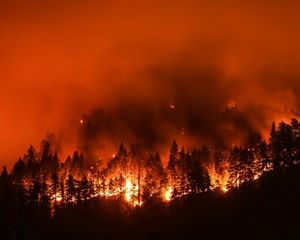Estuary and Floodplain Restoration
In 2022, TNC, in collaboration with a team of fisheries scientists and technical experts, began implementing an ambitious restoration project in the Garcia estuary. This project is a key step towards increasing the amount and quality of essential winter and spring habitat that salmon need to survive. Throughout the summer and fall, eighteen enormous log jams were built to provide extensive shelter within the middle estuary. Young salmon prefer to congregate in and around large wood structures, which provide protection from predators while the salmon feed in the estuary. Before this project, the estuary had only two small jams within its nearly two-mile length.
This first phase also gave young salmon access to flooded wetlands with seasonal ponds that provide refuge during high winter flows, winter rearing habitat, and a rich feeding environment for young out-migrating salmon. Existing floodplains were reconnected to the river by removing levees and building small ponds, making over two acres of high-quality floodplain habitat accessible to young salmon and trout. And the fish could not be happier about it. In recent surveys, schools of hundreds of fish were observed throughout the restoration area.
What’s Next
We aren’t stopping here. Going forward, TNC will continue to develop and implement high-impact restoration actions in the Garcia estuary, while also looking upstream to advance restoration through much of the lower river. We recently received a large Transformational Habitat Restoration and Coastal Resilience grant from the National Oceanic and Atmospheric Administration that will help expand our work on the North Coast to plan, design, and implement a portfolio of projects across the region. Building on a long history of local restoration efforts in the Garcia River, this work will advance restoration of high-priority habitat for coho salmon in the lower watershed over the next decade.


